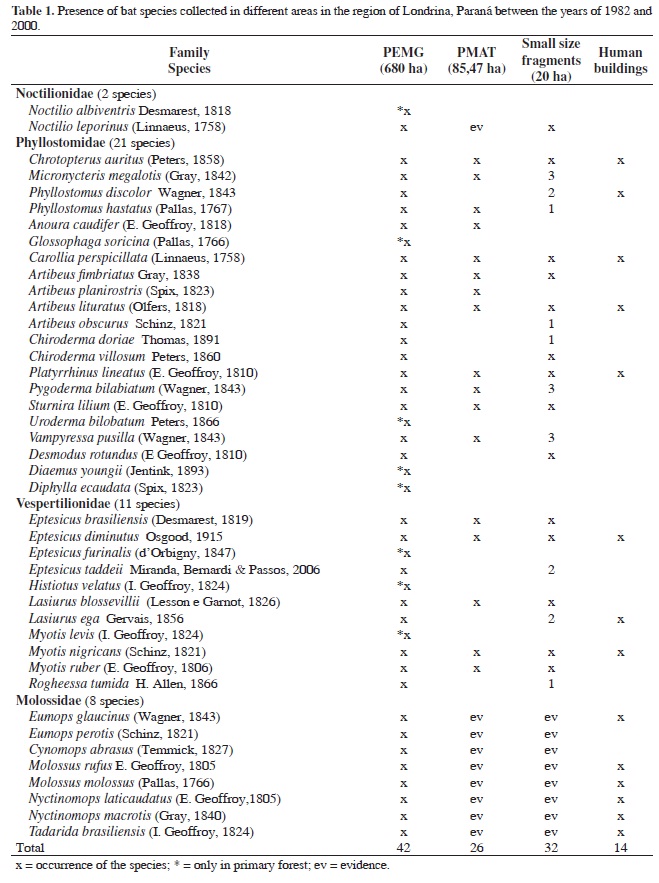Most natural forests have been converted for human use, restricting biological life to small forest fragments. Many animals, including some species of bats are disappearing and the list of these species grows every day. It seems that the destruction of the habitat is one of its major causes. This study aimed to analyze how this community of bats was made up in environments with different sizes and quality of habitat. Data from studies conducted in the region of Londrina, Parana, Brazil, from 1982 to 2000 were used. Originally, this area was covered by a semi deciduous forest, especially Aspidosperma polyneuron (Apocynaceae), Ficus insipida (Moraceae), Euterpe edulis (Arecaceae), Croton floribundus (Euforbiaceae), and currently, only small remnants of the original vegetation still exist. The results showed a decline in the number of species caught in smaller areas compared to the largest remnant. In about 18 years of sampling, 42 species of bats were found in the region, representing 67% of the species that occur in Paraná and 24.4% in Brazil. There were two species of Noctilionidae; 21 of Phyllostoma; 11 Vespertilionidae and eight Molossidae. Eight of these were captured only in the largest fragment, Mata dos Godoy State Park (680 ha). Ten species had a low capture rate in the smaller areas with less than three individuals. Of the total sampled, 14 species were found in human buildings, and were able to tolerate modified environments, foraging and even using them as shelter. As the size of the forest area increases, there is a greater variety of ecological opportunities and their physical conditions become more stable, i.e., conditions favorable for growth and survival of a greater number of species. Forest fragmentation limits and creates subpopulations, preserving only long-lived K-strategist animals for some time, where the supporting capacity of the environment is a limiting factor. The reduction of habitats, species and genetic diversity resulting from human activities are endangering the future adaptability in natural ecosystems, which promotes the disappearance of low adaptive potential species.
bat conservation; habitat destruction; wildlife elimination; human impact; forest fragments


